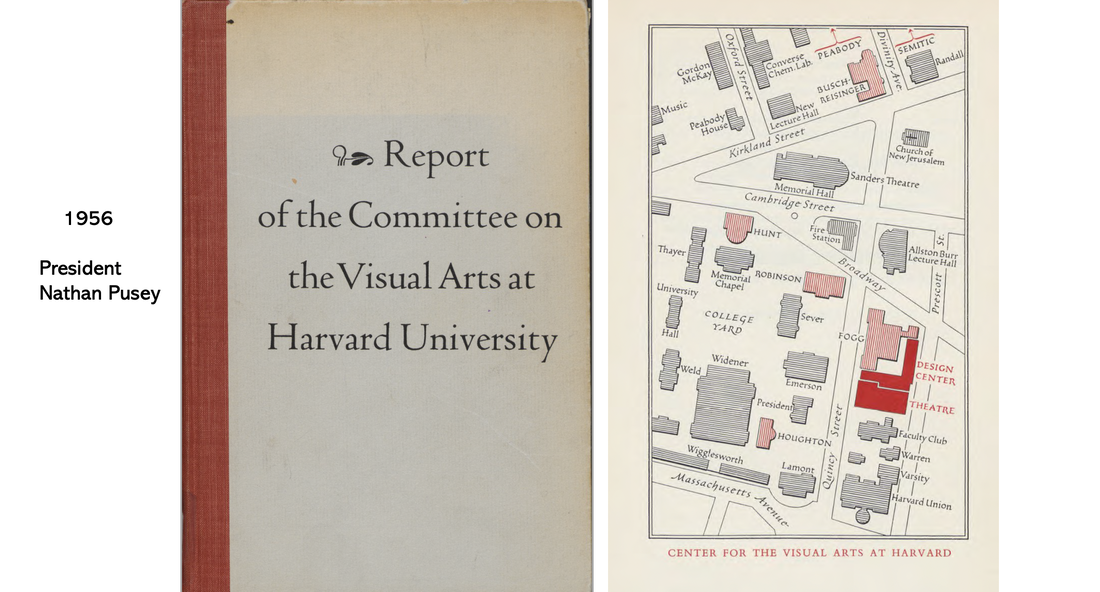Advancing Racial Justice
December 6, 2021 Dean Claudine Gay
"The Task Force report offers an inspiring and ambitious vision for the future of our shared spaces. It calls for a dynamic approach to our visual culture and signage, one that takes seriously the practices of curation and understands our visual environment as a site of both profound educational opportunity as well as of consequential experience and affirmative community. It recognizes that the visual elements of our campus bear powerful messages about what we value, who we celebrate, and what kind of community we aim to foster. They set forth a clear set of principles that seek to bring our visual culture more fully into the cognitive life of our community, celebrate our institution’s strength in the arts, and intentionally animate our shared values of engaging with diverse perspectives and fostering a community anchored in inclusion, belonging, and accessibility. I fully endorse the principles they have articulated, grounded as they are in deep respect for the power of art in public spaces to spark dialogue and cultivate learning. And I am grateful for their recommendations for how to realize the report’s full vision and make space in our visual culture for the multitude of voices and stories that make up our institutional past, present and future." ....
"To make the vision of the report a reality, we must first build the infrastructure and expertise necessary to support the dynamic curation of FAS spaces over the long term. Specifically:
"The Task Force report offers an inspiring and ambitious vision for the future of our shared spaces. It calls for a dynamic approach to our visual culture and signage, one that takes seriously the practices of curation and understands our visual environment as a site of both profound educational opportunity as well as of consequential experience and affirmative community. It recognizes that the visual elements of our campus bear powerful messages about what we value, who we celebrate, and what kind of community we aim to foster. They set forth a clear set of principles that seek to bring our visual culture more fully into the cognitive life of our community, celebrate our institution’s strength in the arts, and intentionally animate our shared values of engaging with diverse perspectives and fostering a community anchored in inclusion, belonging, and accessibility. I fully endorse the principles they have articulated, grounded as they are in deep respect for the power of art in public spaces to spark dialogue and cultivate learning. And I am grateful for their recommendations for how to realize the report’s full vision and make space in our visual culture for the multitude of voices and stories that make up our institutional past, present and future." ....
"To make the vision of the report a reality, we must first build the infrastructure and expertise necessary to support the dynamic curation of FAS spaces over the long term. Specifically:
- I am establishing a new position for an FAS campus curator. The curator will have primary programmatic oversight for FAS visual culture and signage, including establishing a dynamic program of public art in the FAS, and will provide the leadership and professional and technical expertise to realize the full promise of the vision laid out in the report.
- I am also forming a new FAS Committee on Visual Culture and Signage. The committee will act in a consultative and advisory capacity to the future curator, providing ideas and strategies for aligning visual culture practices with the principles and vision articulated in this report and helping to advance the Task Force’s vision in our community broadly...."
Report of the Committee on Visual Arts at Harvard University
This report can be found at the docs tab
Report of the Committee on the Visual Arts at Harvard University published by the President and Fellows of Harvard College. Foreword by Nathan M. Pusey, Harvard President. "In addition to the collections housed at the Fogg, Harvard has important holdings in Germanic art (Busch-Reisinger Museum) and in prehistoric, African Negro, Oceanic, and precolonial art (Peabody Museum). The existence of these collections poses a problem: shall the Fogg Museum display merely that art which is not otherwise assigned to Harvard’s centers of defined cultural studies, or shall the Fogg in its capacity as the university’s principal art museum exhibit the best (or some of the best) of all that Harvard owns?.... Even though it is clearly impossible to draw an arbitrary line between what is significant as a work of art and what is significant as an archaeological artifact, we point out that Peabody Museum contains works of the highest aesthetic interest. Fortunately, these exist in some quantity as well. A policy of frequent borrowing by the Fogg from the Peabody should not be difficult to work out. We recommend therefore, that the Fogg Museum display a few examples of good quality borrowed from other Harvard museums from fields not represented in the Fogg collections.....We assume that steps will eventually be taken by Peabody to make these [African arts] a pleasure to see, but we urge that a small part of this collection be shared with the Fogg, which could make immediate use of it." pp.78-80. [emphasis in the original]


